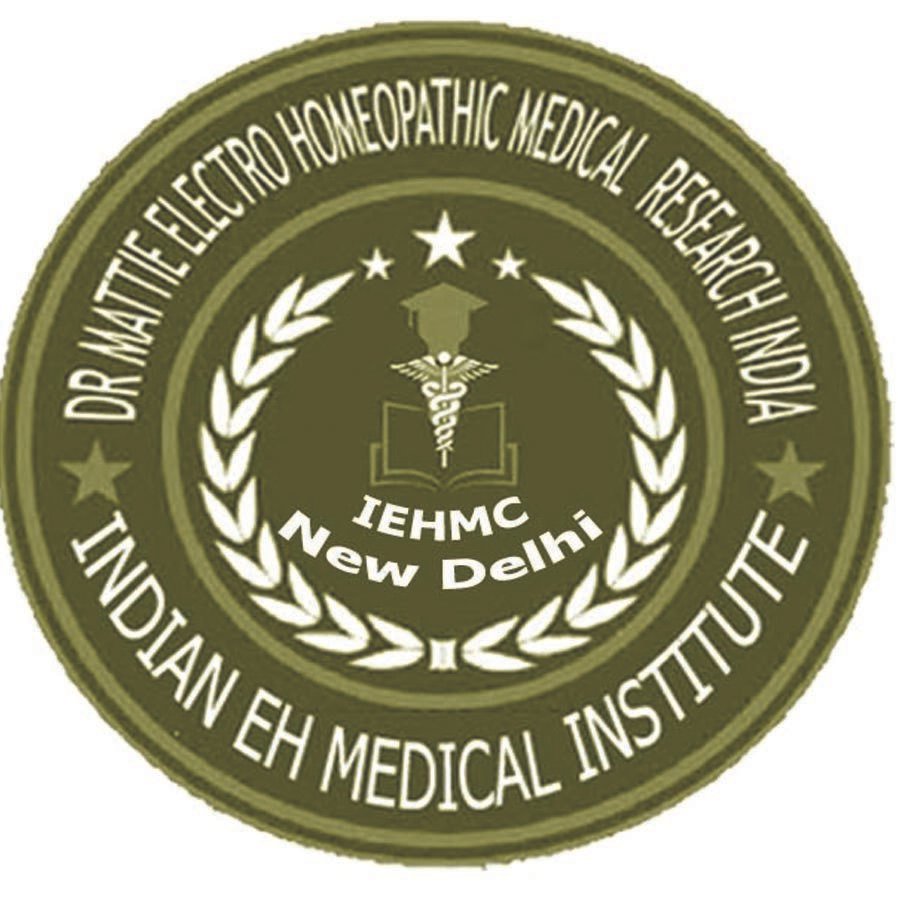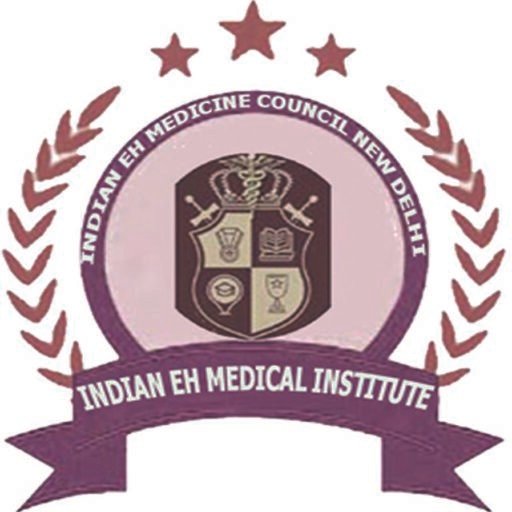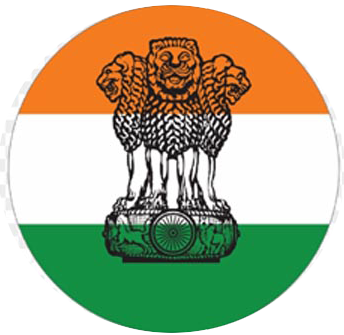Syllabus
BEMS CERTIFICATION COURSE FIRST YEAR
Subjects of BEMS Certification Course
BEMS First Year
1.Anatomy Part-1
2.Physiology Part-1
3.Food and Hygiene
4.Electropathy Fundamental & Pharmacy
BEMS Second Year
1.Anatomy Part-II
2.Physiology Part-II
3.Pathology
4.Materia Medica of Electropathy
BEMS Third Year
1.Gynaecology
2.ENT
3.Ophthalmology
4.Practice of Medicine Part-I
BEMS Final Year
1.Suregery
2.Obstetrics & Paediatrics
3.Medical Juriprudence
4.Practice of Medicine Part-II
Paper – I Fundamentals of Electropathy & Pharmacy
(1) Introduction of Electropathy/Electro-Homoeopathy
(2) Principal of Electropathy
(3) Life history of Dr. Count Ceaser Mattei
(4) Development of Electropathy under NEHM of India
(5) Principals of Nature
(6) Principles of (OD) Force
(7) Difference between Homoeopathy & Electropathy.
(8) Introduction of Pharmacy including its branches.
(9) Cohobation method.
(10) General and deep knowledge about botanical plants which are used in the
preparation of Electropathy Medicines & also those new plants which are
included by NEHM of India.
(11) Collection of Medicinal plants.
(12) Compositions of Medicines & Electricities
(13) Preparation of Dilutions, Injections, Globules, Ointment, Compress,
Lotion, Bath, Liniments, Enema.
(14) Prescription writing with Abbreviations.
(15) Electropathy Pharmacopoeia
(16) Vehicles used in Electropathy.
PRACTICALS :- Identification and collection of a minimum 10 plants (available
in India) used in EH Medicines and their parts used to be attached in the file
with their details, determine moisture content of the plant, use of
Pharmaceutical apparatus and vehicles, preparation of Electropathy Medicated
Dilutions, Sugar of milk, Globules and all the external applicants, methods of
preservation of Electropathy Medicines, Preparation of various doses.
Paper – II ANATOMY – I
UNIT – 1 BONES: – All kinds of Bones.
UNIT – 2 JOINTS :- Classification of Joints, Joints of Vertebral Column
Associated with the movement of the head, Joints of the Ribs,
Temporomandibular Joints of the Upper Limb, Acromioclavicular Joints,
Shoulder Joints, Elbow Joints, Radio Ulnar Joints, The Joints of Pelvis, The
Joints of the Lower Limb, Hip Joint, The Tibiofibular Joints, The Ankle Joints,
The Tarsal Joints.
UNIT – 3 THE MUSCLES: – Muscles of Head and Neck, Muscles of the ear,
Nose and Mouth, The Infrahyoid muscle, The Prevertebral Muscles, the
muscles of the Upper Limb, Muscles of the forearm and shoulder, muscles of
the abdominal wall and chest wall, The Diaphragm, muscles of Pelvis,
Perineum and anal Canal, Muscles of Urogenital triangle.
UNIT – 4 HEART & ARTERIES: – Shape, Position and surface of the outline of
the Heart, Circulation of the Blood through the Heart, Arteries and veins,
Cavities of the Heart, Arteries, of the thorax, the Aorta, arteries of the upper
Limb, the Brachial Artery, the Radial artery, Artery of the abdominal Aorta,
lliac Artery, Arteries of the lower limb, Gluteal arteries, The femoral Artery,
Tibial artery, The Poplitial artery.
THE VEINS:-Veins of the Brain, of the face, Scalps and neck, of the upper
Limb, of the thorax, the vertebral and spinal veins of the abdomen and pelvis.
The Hepatic portal vein system, veins of the Lower Limb.
UNIT – 5 LUNGS :- Lungs shape, Fissures & Lobes, Root of the Lung,
Bronchial Tree, Arterial Supply, Venous drainage, Lymphatic Drainage, Nerve
Supply, Broncho-pulmonary segments.
PRACTICALS: – Study of bones (Osteology), Joints, Muscles, Circulatory
Systems
Paper – III PHYSIOLOGY – I
UNIT – 1 Structure of Cell & its functions, Elementary Tissues of Human body.
UNIT – 2 BLOOD :- Functions, Plasma Protein, E.S.R. clotting, Blood clotting,
Blood volume, Bone marrow & its functions, R.B.C. & its development, W.B.C.
& its development, Haemoglobin & its functions, Iron Metabolism, Platelets &
its functions, Blood Grouping, transfusion and its hazards, Regulation of body
fluids.
UNIT – 3 CARDIO – VASCULAR SYSTEM: – Capillary circulation, Venous
return, structure & Properties of heart, Cardiac output & Heart Rate, Blood
Pressure, Circulation through special regions.
UNIT – 4 RESPIRATORY SYSTEM: – Pulmonary volumes & Capacities,
regulation of Breathing, carriage of Oxygen by blood, CO2 Transport in body,
Dyspnea, Anoxia, Body temperature & its regulation.
UNIT – 5 METABOLISM: – B.M.R., Metabolism of carbohydrates, Proteins &
Fats, Vitamins, Diet.
UNIT – 6 PHYSIOLOGY OF MUSCLES.
UNIT – 7 DIGESTIVE SYSTEM:- Physiology of digestion in small intestine,
Large intestine, Deglutition, Vomiting, Hiccup, Function of Liver & Gall
Bladder.
PRACTICALS:-
1. Recording the Body Temperature
2. Recording the Pulse
3. Recording the Blood Pressure. (in different postures)
4. Collection of Blood Sample
5. P.C.V. (Packed Cell Volume)
6. Bleeding Time
7. Clotting Time
8. Haemoglobin Estimation
9. E.S.R.
10. Blood Grouping.
11. Collection of a Sample of Urine and Physical Examination of Urine.
12. Certain Normal Haematological Values and the Conditions in which they
may Increase or Decrease.
Paper – IV FOOD & HYGIENE (Social and Preventive Medicine)
UNIT – 1 Air and ventilation, Water, Food and Nutrition.
UNIT – 2 Waste disposal, Insects and Helminthes.
UNIT – 3 Infections and Disinfections, Communicable and Non-communicable
diseases.
UNIT – 4 Maternity and Child Health Services. School Health Services.
UNIT – 5 Family Planning.
UNIT – 6 Sanitation at Fairs and Festivals.
UNIT – 7 Medical Statistics, Epidemiology.
PRACTICALS: Social Medicines, Preventive Medicines, Medical
Statistics
BEMS CERTIFICATION COURSE SECOND YEAR
Paper – V PATHOLOGY
1. Degeneration & Infiltration: – Cloudy swelling, Fatty degeneration,
Glycogen infiltration, Hyaline degeneration, Amyloidosis, Necrosis, Gangrene,
Post Mortem Changes.
2. Inflammation with healing, repair.
3. Disturbances of Circulation.
4. Disturbances of Water and Electrolytes Balance.
5. Immunopathology: – Hyper sensitive reactions, Auto immunity.
6. Disorders of growth: – Anaplasia, Atrophy, Hypoplasia, Hypertrophy.
7. Neoplasia :- Origin, Nature and Causation, specific tumours, Epithelial &
other Varieties.
8. Infections:-
(a) Bacterial – Staphylococcus, Sterptococcus, Pneumococcus, Meningococcus,
Gonococcus, E. Coli, Proteus and Pseudomonas, Salmonella, Shigella, Cholera
Vibrio, Diphtheria, Tuberculosis, Syphilis and Clostridia.
(b) Protozoal- Entamoeba histolytica, Giardiasis, Plasmodium, Leishmania
donovani.
(c) Metazoal- Ascariasis, Filaria, Taenia.
(d) Viral- Variola, Arbovirus, Poliovirus, H.S.V. -1, Rotavirus, H.I.V., Hepatitis,
Myxovirus, Herpes, Rubeola, P.V.M.
9. Deficiency Diseases: – Protein deficiency, Vitamin deficiency.
10. Pigmentation: Endogenous and Exogenous, Calcification.
NEHM OF INDIA, NEW DELHI
SYSTEMIC DISEASES
11. Cardio Vascular System: Arteriolosclerosis, Atherosclerosis, Ischaemic
Heart Disease, Myocarditis.
12. Rheumatic Heart Diseases: Bacterial Endocarditis, Pericarditis
13. Alimentary System: Gastritis, Peptic ulcer, Gastric Carcinoma,
Appendicitis, Intestinal Obstruction, Peritonitis.
14. Blood and R.E. System: Aneamia & Leukaemia, Splenomegaly.
15. Hepatobiliary: Chronic venous congestion, Atrophy & Hypertrophy,
Degenerations, Necrosis, Hepatitis, Cirrhosis, Cholecystitis & Gall stones,
Jaundice.
16. Kidney: Glomerulonephritis, Hypertension, Diabetes.
17. Locomotor System: Osteomyelitis, Tuberculosis of bone.
18. Respiratory System: Pneumonia, Bronchopneumonia, Tuberculosis,
Bronchogenic Carcinoma.
PRACTICALS: Pathology and Microbiology
Paper – VI MATERIA MEDICA
(1) Introduction of Electropathy/Electrohomoeopathy
(2) Principle of Electropathy
(3) Life history of Dr. Count Ceaser Mattei
(4) Development of Electropathy
(5) Principles of nature
(6) Principles of ‘Od’ Force
(7) Difference between Homoeopathy & Electropathy.
(8) Causes of Diseases.
(9) Temperament (Constitutions).
(10) Classification of remedies.
(11) Slass (SL)
(12) Scrofoloso NO.1 to 12.
(13) Synthesis S.Y.
(14) Limfatico NO.1 &2.
(15) Angioitico NO.1 to 3.
(16) Pettorales NO.1 to 9.
(17) Vermifugo group V1 & V2
(18) Canceroso group C1 to C17.
(19) Febrifugos F1 & F2.
(20) Venerio group Ven1 to Ven5
(21) Electricities – White, Red, Green,Yellow & Blue.
(22) Aqua Perla Pelli (A.P.P.)
(23) Electro-Homoeopathic Injection NO.1 to 36.
(24) Electropathy Externals – Electro-Homoeopathic Ointments, Red Salve S5,
Blue Salve A2 or A3, Green Salve Canceroso No.5, White Salve Canceroso No.5,
White Salve Limfatico, White Salve Domfin (A), (B) & (C), White Salve Lord (A) &
(B), Yellow Salve Vermifugo. MIXED OINTMENTS: – Anti abscess, Chest pain
cure, Anti scabies, Meltone.
(25) Important points of body to which Electricities and Ointments should be
applied.
(26) Diseases, Aetiology, Symptomatology, Doses and Dilutions, Reaction,
Treatment.
PRACTICALS: Electropathy Medicines
Paper – VII ANATOMY – II
UNIT – 1 The Lymphatic System, Spleen & Thymus :- The lymphatic
drainage of the head and neck and upper limb, Lymphatic system of abdomen
and Pelvis, Lymphatic system of lower limb. The spleen and Thymus.
UNIT – 2 The Nervous System: – C. N.S.& Peripheral- The cranial nerve,
Ophthalmic nerve, Maxillary nerve, Mandibular nerve, the Spinal nerve, the
cervical nerve, the Thoracic nerve and the Lumbar nerves. The spinal cord, the
brain, the membranes of meninges.
UNIT – 3 The Ear and Eyes :- External Ear, Middle Ear, Internal Ear, Lacrimal
Apparatus, The Eye ball, The extrinsic muscles of the Eye.
UNIT – 4 The Alimentary System :- The mouth teeth & tongue, palate,
Salivary Glands the Pharynx, the Oesophagus, the Stomach, Small and large
Intestines, the liver, the Gall bladder and Bile Ducts, the Pancreas, the
peritoneum.
UNIT – 5 The Urogenital System :- The Urinary Organs, the kidneys, the
Ureters, the bladder, the Male Genital Organs, the Bulb, the testis, the seminal
duct, the seminal vesicles, the female genital internal and external Organs.
UNIT – 6 The Ductless Glands: – The Thyroid gland, the suprarenal glands,
Pituitary glands.
PRACTICALS: All Systems
Paper – VIII PHYSIOLOGY – II
UNIT – 1 Excretory System: – Kidneys & its function, Selective Reabsorption &
Tubular Secretion, Formation of New products.
UNIT – 2 Urine: Mechanism of regulation of blood reaction. Micturition, Skin &
its appendages.
UNIT – 3 Endocrines Systems:- Physiology of pituitary gland, Physiology of
thyroid gland, physiology of parathyroid gland, calcium metabolism, Endocrine
functions pancreas, Adrenal gland & its Hormones, All hormones.
UNIT – 4 Reproductive System :- Male & Female reproductive organs, Puberty
Testis & Accessory male sex organs, Menstrual cycle & Physiology of
Pregnancy, Mammary glands, hormones of Ovary & Corpus Luteum, Testicular
hormones.
UNIT – 5 Nervous System: – Structure and functions of different parts, Reflex
action, Synapse, Receptions, Sensations, Tracts, Muscles tone & Posture,
Cerebrospinal fluid.
UNIT – 6 Special Senses: – Vision (Eye), Sense of hearing (Ear), Sense of taste
(Tongue), Sensation of smell (Nose).
PRACTICALS: – All Systems
BEMS CERTIFICATION COURSE THIRD YEAR
Paper – IX GYNAECOLOGY (with Electropathic Treatment)
1. Gynecological diagnosis.
2. Malformation of female generative organs.
3. Diseases of Vulva & Vagina.
4. Sexually Transmitted Diseases in female.
5. Tuberculosis of genital tract.
6. Diseases of Urinary system.
7. Pathology of conception.
8. Disorders of Menstruation.
9. Hormone therapy.
10. Uterus: – Inflammation, Prolapse, Displacement & New growth.
11. Endometriosis.
12. Inflammation of Uterine appendages (Fallopian Tubes, Ovary, Broad &
Parametrium).
13. Diseases of Ovary.
14. Diagnostic instruments used.
PRACTICALS: Gynecological Diagnosis and Treatment
Paper – X OPHTHALMOLOGY (with Electropathic Treatment)
1. Examination of Eye.
2. Diseases of Lid: Blepharitis, Stye, Chalazion, Entropion, Ptosis,
Dacryocystits, Orbital Cellulitis.
3. Diseases of Conjunctiva: Hyperaemia, Acute Conjuctivitis (Mucopurulent,
Purulent & Membranous)
4. Cornea: Purulent Keratitis (Hypopyon & Marginal Ulcer) Herpes, Interstitial
Keratitis, Arcus Senilis, Corneal Opacities.
5. Sclera: Episcleritis, Irridocyclitis.
6. Lens: Cataract.
7. Glaucoma, Paplloedema, Optic neuritis, Colour Blindness, Night Blindness,
Foreign body in eye, Squint.
8. Diagnostic instruments used.
PRACTICALS: Diagnosis and Treatment of Eye Diseases with Electropathy
Paper – XI E.N. T. (with E.H. Treatment)
1. Anatomy & Physiology of Ear, Nose and Throat.
2. E.N.T. Examination & Knowledge of Instruments.
3. Nose:-Nasal injury, Epistaxis, Foreign body in nose, Boils of nose, Acute &
Chronic allergic Rhinits, Nasal Polyp, Acute & Chronic sinusitis.
4. Mouth: Thrush, Gingivitis, Pyorrhea.
5. Pharynx: – Acute & Chronic Tonsillitis, Quinsy, Acute & Chronic
Pharynigitis, Diphtheria, Vincent’s Angina.
6. Larynx: – Acute & Chronic Laryngitis, Acute Oedema of Larynx, Laryngeal
Stridor, Croup.
7. Ear: – Otitis External, Wax in ear, Fungal infection, Foreign body in ear.
Eustachian Catarrh, Acute Otitis Media, Chronic Otitis Media, Mastoiditis,
Labyrinthitis, Vertigo.
8. Diagnostic instruments used.
PRACTICALS: Diagnosis and Treatment of Ear, Nose and Throat Diseases
with Electropathy
Paper – XII PRACTICE OF MEDICINE – I (Including Diagnosis & E.H. Treatment)
Detailed Knowledge of Diseases on the basis of Electro-Homoeopathy Therapy. :-
1. Fever and its E.H. Treatment.
2. Infective Diseases :Measles, Mumps, Chicken Pox, Influenza, Hydrophobia,
Dengue Fever, herpes, Zoster, Food poisoning, Typhoid and Paratyphoid Fever,
Bacillary Dysentery, Whooping Cough, Diphtheria, Gonorrhoea, Cholera,
Tetanus, Cholera, Tuberculosis of lung, Gland, Abdomen and Tuberculous
meningitis. Tape Worm & Hydatid diseases, Thread Worm, Round Worm, Hook
Worm, Filariasis, Malaria, Amoeniasis, Kalaazar, Giardiasis.
3. General Disorders: – Sun stroke, Electric shock, Drowning, Acute Poisoning,
Snake bite.
4. Respiratory System: Haemoptysis, Acute and Chronic Bronchitis
Pneumonia, Bronchiectasis, Asthma, Tropical Pulmonary Eosinophilia,
Carcinoma lung, Pleurisy, Pleural effusion, Pneumothorax, Emphysema.
5. Connective Tissue Disorders: – Rheumatoid Arthritis, Gout, Osteoarthritis,
Osteomalacia.
6. Digestive System : Dysphagia, Hiccup, Anorexia, Haematemesis and
Melaena, Hiatus Hernia and Reflux Oesophagitis, Carcinoma Oesophagus,
peptic Ulcer, Gastritis, Cancer of Stomach, Appendicitis, Malabsorpation
Syndrome, Intussusception, Diarrhoea, Flatulence, Constipation, Intestinal
Colic, Irritable Bowel Syndrome.
7. Hepato-Biliary System: – Jaundice, Viral Hepatitis, Cirrhosis of liver,
Hepatic coma, Amoebic Hepatitis and abscess, Acute and chronic Cholecystitis
& Gall stones.
8. Excretory System: Glomerulonephritis, Nephrotic Syndrome, Urinary Tract
Infection, Renal failure, Haematuria, Renal and Vesical Calculi, Tumours of
Kidney and Urinary Tract.
9. Haematology: Anaemias, Erythrocytosis and Polycythemia, Agranulocytosis,
Infectious Mononucleosis, Leukemias, Malignant lymphomas.
PRACTICALS: Diagnosis and Treatment of Diseases with Electropathy
BEMS CERTIFICATION COURSE FINAL YEAR
Paper – XIII MEDICAL JURISPRUDENCE
1. Legal Procedures in courts and law in relation to medical men.
2. Personal Identity.
3. Post Mortem Examination in brief.
4. Examination of Biological stains and hairs.
5. Death in its medico-legal aspects, Sign of Deaths.
6. Death from Asphyxia, Starvation, Cold and Heat.
7. Injuries from burns and scalds, lightening and Electricity and Mechanical
violence.
8. Examination of Injured persons and regional Injuries.
9. Impotence, Sterility and artificial Insemination.
10. Sexual Offences, Rape, Incest, Sodomy.
11. Abortion, Infanticide.
12. Insanity and its medico-legal aspects.
13. Toxicology: Poisons and there legal aspects, Corrosive Poisons, Irritant
poisons, Neurotic poisons, Irrespirable gases.
PRACTICALS: Forensic Medicine and Toxicology
Paper – XIV OBSTETRICS & PAEDIATRICS (with Electropathic
Treatment)
(A) OBSTETRICS:
1. Anatomy of bony pelvis & Foetal Skull.
2. Clinical Symptoms & Pathological examination of pregnancy.
3. Vomiting & Abdominal pain in pregnancy.
4. Antenatal care.
5. Normal Labour mechanism & clinical course & its management.
6. Abnormal Labour :-
(i) Foetal malpresentation.
(ii) Foetal malformation.
(iii) Difficulty in passage: Contracted Pelvis, Abnormal Cervix Vagina,
Perineum Pelvic Tumours.
(iv) Fault in expulsive force: – Uterine Inertia.
7. Post maturity Descent of Cord.
8. Normal Puerperium.
9. Abnormal Puerperium.
10. Antepartum Haemorrhage.
11. General disorders associated with pregnancy.
12. Toxaemia of pregnancy: Pre-eclampsia, Eclampsia, Essential
Hypertension, Nephritis.
13. Pathology of Pregnancy: Forceps delivery, D&C Episiotomy, Caesarian
Section Craniotomy.
14. Obstetrics Operation: Forceps delivery, D&C, Episiotomy, Caesarian
Section Craniotomy.
15. Diagnostic instruments used.
(B) PAEDIATRICS:-
1. Examination of Child, Growth & Development, Immunization.
2. New Born: Signs & symptoms in neonatal period, Infections of new born,
Infantile feeding & oral rehydration therapy, premature baby, birth injury,
Janudice in new born, Haemorrhagic diseases, Respiratory distress syndrome,
Infantile diarrhoea.
3. Nutritional Disorders: Kwashiorkor, Marasmus,. Rickets, Scurvy, Indian
Childhood Cirrhosis, Paediatric Allergy.
4. Psychosomatic Disorders: Pica, Bed wetting, Sleep walking, Breath holding
spells, thumb sucking, mental retardation.
5. Unclassified: Battered Child Syndrome; Floppy Baby, Cot Death, Infantile
Tremor Syndrome, Congenital Dislocation of Hip.
6. Genetics: Dominant, Recessive & Sex Linked Traits, Congenital
Malformations.
PRACTICALS: Obstetrics and Pediatrics treatment with Electropathy
Paper – XV SURGERY
1. Wounds & Acute infections.
2. Chronic infections.
3. Tumour, Cysts, Ulcers, Sinuses.
4. Haemorrhage, Blood transfusion, Shock.
5. Burn injury and its management.
6. Infection of hand and its management.
7. Injuries of hand and fingers.
8. Infection of bones & joints.
9. Tumours of Bones & joints.
10. General principles in the treatment of fractures & dislocation of Joints.
11. Head, Spinal and Nerve injuries.
12. Diseases of face, Palate, Lips, neck and Oral Cavity.
13. Diseases of Arteries & Veins.
14. Diseases of Salivary glands, Stomach, Gall Bladder, Rectum & Anal Canal.
15. Intestinal Obstruction, Appendicitis.
16. Hernia: Inguinal, Femoral, Umbilical, Epigastric & Hiatus
17. Diseases of Prostate, Seminal vesicles, Urethra.
18. Anesthesia of bandages and dressings.
19. Application of minor surgery & drainage of Abscess, Carbuncles & Cysts.
20. Diseases of Breast, Kidney, Ureter & Bladder, Renal Stones.
Paper – XVI PRACTICE OF MEDICINE – II (Including Diagnosis & E.H. Treatment)
1. Nervous System: Headache, Dysphasia & Aphasia, Trigeminal Neuralgia,
Bell’s Palsy, Epilepsy, Paraplegia, Hemiplegia, Lumbago, Sciatica Syndrome,
Polyneuritis.
2. Psychiatry: Psychoneurosis, Personality disorders, Depression,
Schizophrenia, Organic Psycho-Somatic disorders.
3. Cardio-Vascular System: Adams – Stoke syndrome, Cardiac Arrest, Cardiac
Failure, Peripheral Circulatory Failure, Rheumatic Fever, Diseases of Heart
Valves (in Brief), Angina Pectoris, Myocardial Infarction, Hypertension, Cor-
Pulmonale, Myocarditis, Pericarditis, Foetal Circulation & Congenital Heart
Diseases.
4. Endocrine:-Hypo and Hyper thyroidism, Goiter, Hypo and Hyper
Parathyroidism, Tetany, Diabetes Mellitus.
5. Skin : Pruritus, Erythematous, Urticarial & Purpuric rashes, Dermatitis &
Eczema, Superficial bacterial & tropical Infections, Fungal Infections,
Tuberculosis of Skin, Leprosy, Syphilis, Psoriasis, Eruptions, Bullous Eruption,
Vitiligo, Seborrhoeic Dermatitis, Alopecia.
6. Sexually Transmitted Diseases.
PRACTICALS: Diagnosis and Treatment with Electropathic Medicines
INTERNSHIP
Compulsory for Six Months period at the attached Electropathy/Electro
homoeopathic dispensary or Hospital, to attend the clinical classes of each
department and prepare the case files of the patients attended and electro
homoeopathic treatment advised, accordingly. After the submission of the case
files with the respective Head of the Departments, the certificate of completion
of Internship will be issued.
The Principal H.O.D. must ensure that before issuance of Internship
Certificate case files must be completed in all respects.
Electro homoeopathic medicine practice registration will only be issued
thereafter.
Health
National



